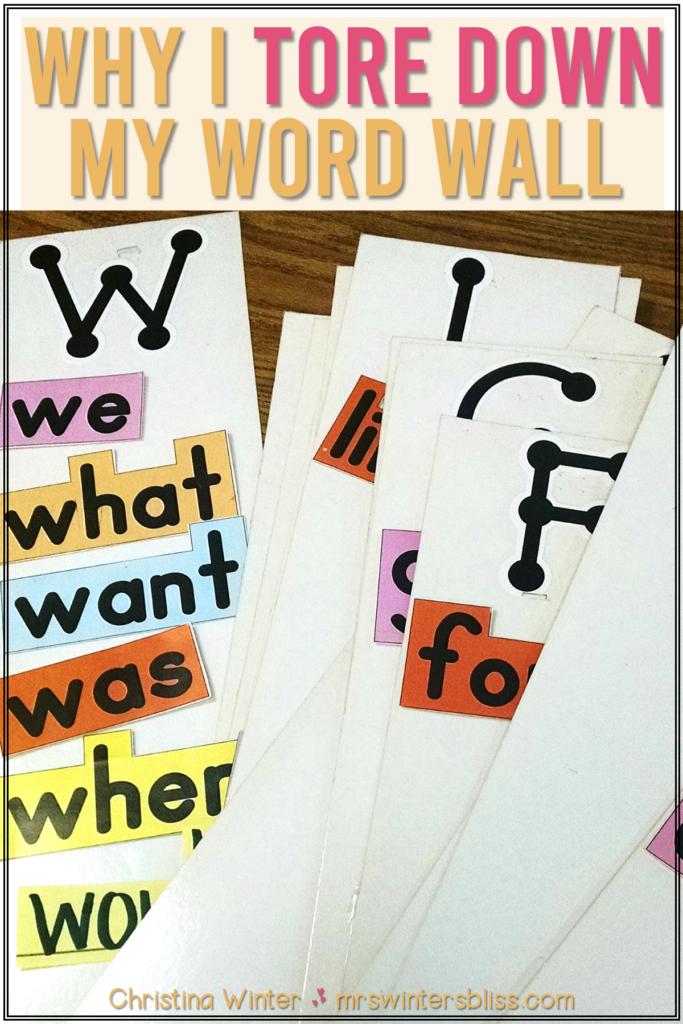
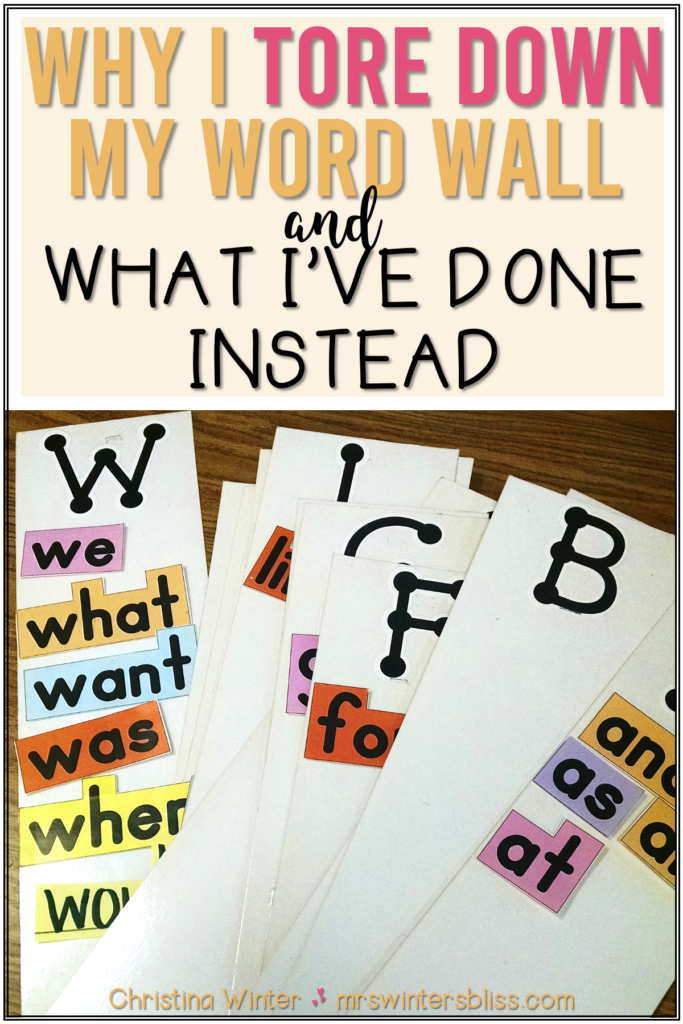
In this post I explain why I tore down my traditional word wall and replaced it with a phoneme sound wall. I share the benefits of a sound wall and finally, the Phoneme Sound Wall with Mouth Articulation Photos resource to help teachers create a sound wall in the classroom.
Word walls. You know, the big bulletin boards that contain a collection of high-frequency sight words. Words that students encounter frequently in their reading and writing, as well as words they frequently misspell.
If you are a K-2 teacher, I bet you have one.
Yep, me too. I mean, I had a word wall.
You see, last year I ripped mine off the wall.
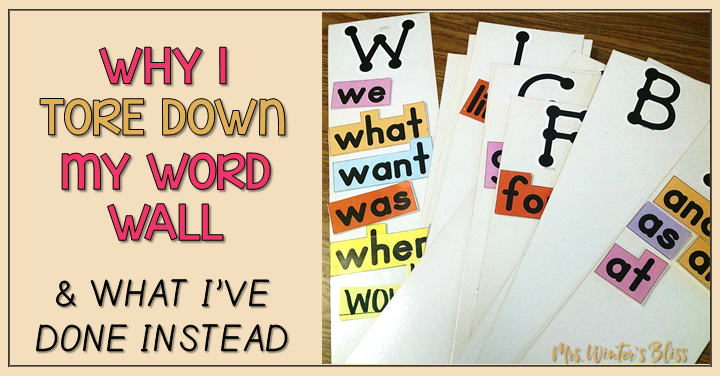
In theory, word walls sound very effective. You introduce a few new words, practice the new words for a week or so, and then slap those puppies up on the word wall! The expectation is that your students will reference them for the remainder of the school year
I followed this practice and had a word wall for years and years and years.
Then last year I ripped it off the wall.
Say what?
Yep, that’s right. I tore down my word wall and replaced it with a sound wall.
What is a Sound Wall?
A sound wall is a way to organize and display the different sounds (or phonemes) we hear in speech. Like a word wall, a sound wall is a place for students to reference when they are spelling and reading words. But UNLIKE a traditional A-Z word wall (where words are grouped by their beginning letter), words on a sound wall are grouped by their sounds.
Another difference is that consonants and vowels are organized separately and in different ways.
A consonant sound wall is organized by the manner of articulation (how the sound is being formed) and the place of articulation (wherein the mouth a sound is occurring).
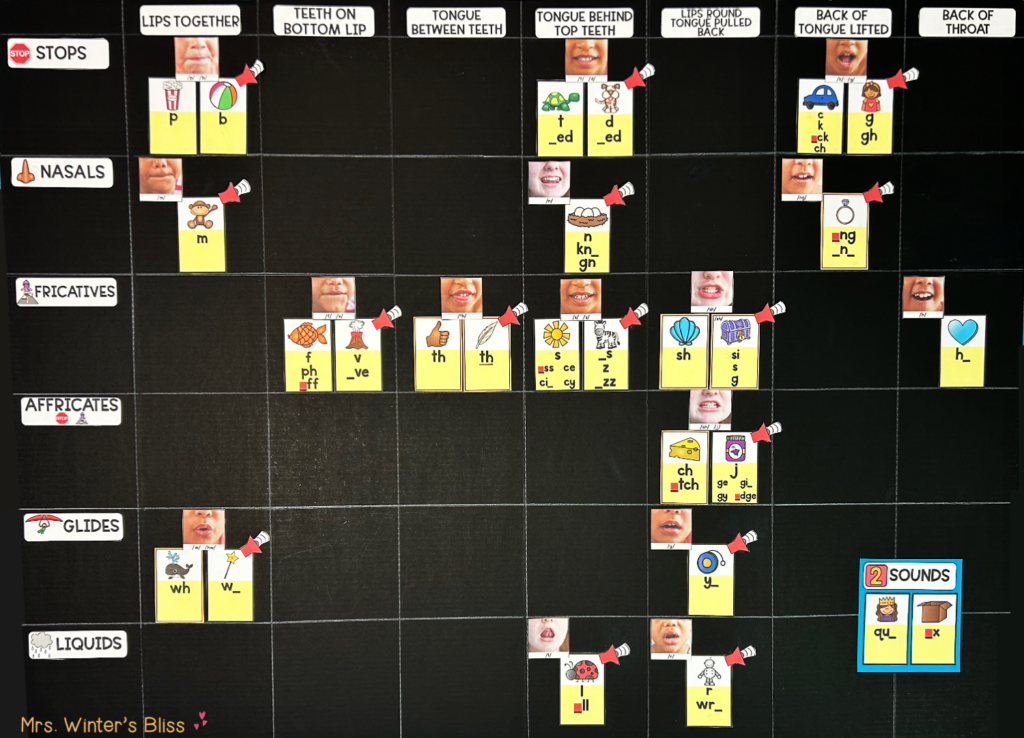
A vowel sound wall organized by the place of articulation. It is visually represented in the shape of a V or a valley to mimic the change in position of our mouths and shift in our jaw when we produce the different the vowel sounds.
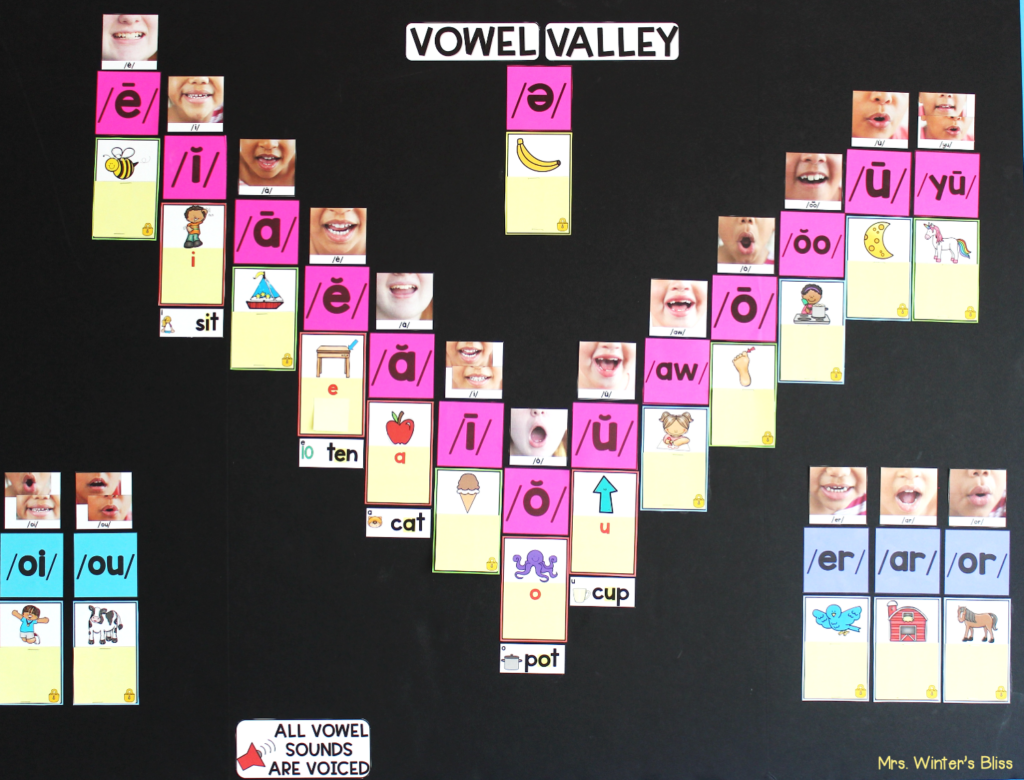
When you see a sound wall you will often find pictures of mouths next to each sound. This helps students better understand what their tongue and mouth are doing when they produce a sound and encourages them to pay attention to the way their mouth feels, looks and acts when they produce different sounds. Mouth pictures are a great support to help students connect the sounds they hear with the print that represents them.

Take a look at this post for more information about how sound walls are organized.
Why I Tore Down My Word Wall and Put Up a Sound Wall
The more I read and learned about sound walls, the more they made sense to me! Here are a few of the main benefits I see to using a sound wall in the classroom:
- Sound walls are based on the science of reading! Research finds that readers make the connection between print patterns and phonological information that is already stored in the brain in order to then make meaning of the word they’re reading (Moats, 2010). This is why explicitly teaching phonemes is necessary before you teach sound-letter correspondence.
- Sound walls approach things from the student’s point of view. A traditional A-Z word wall categorizes words by their first letter. But that doesn’t make sense to someone who is just learning to spell! A student looking for the word phone will not naturally look to P. Putting the word knee under K is confusing to them! A sound wall categorizes words by their sounds which makes much more sense to the learner!
- They allow for explicit instruction of phonemes. Kids learn to talk well before they learn to read or write. This is because our brains are hardwired for oral language, but not for reading and writing. Students need direct and explicit instruction on how to read, write, and spell. A sound wall is a tool that allows for this valuable, explicit phonics instruction.
It became so clear to me that sound walls are a powerful tool to help students learn to read and write! Next, I focused on how I would use a sound wall in my classroom and made a plan for introducing it to my students.
Last, I just needed create all the components of my sound wall. That’s just what I did and now I can share it with you!
Phoneme Sound Wall Resource
A sound wall has a lot of components, but don’t let that overwhelm you! You don’t have to create anything, I’ve already done that for you!
I created the Phoneme Sound Wall with Mouth Articulation Photos resource that has absolutely everything you need to create a sound wall from start to finish! Rather than spending hours creating the materials yourself, you can focus your time on planning and providing smarter phonics instruction to your students. And isn’t that the way it should be??
To get your sound wall started you’ll get phoneme cards and phoneme group labels to organize the sounds on the wall.
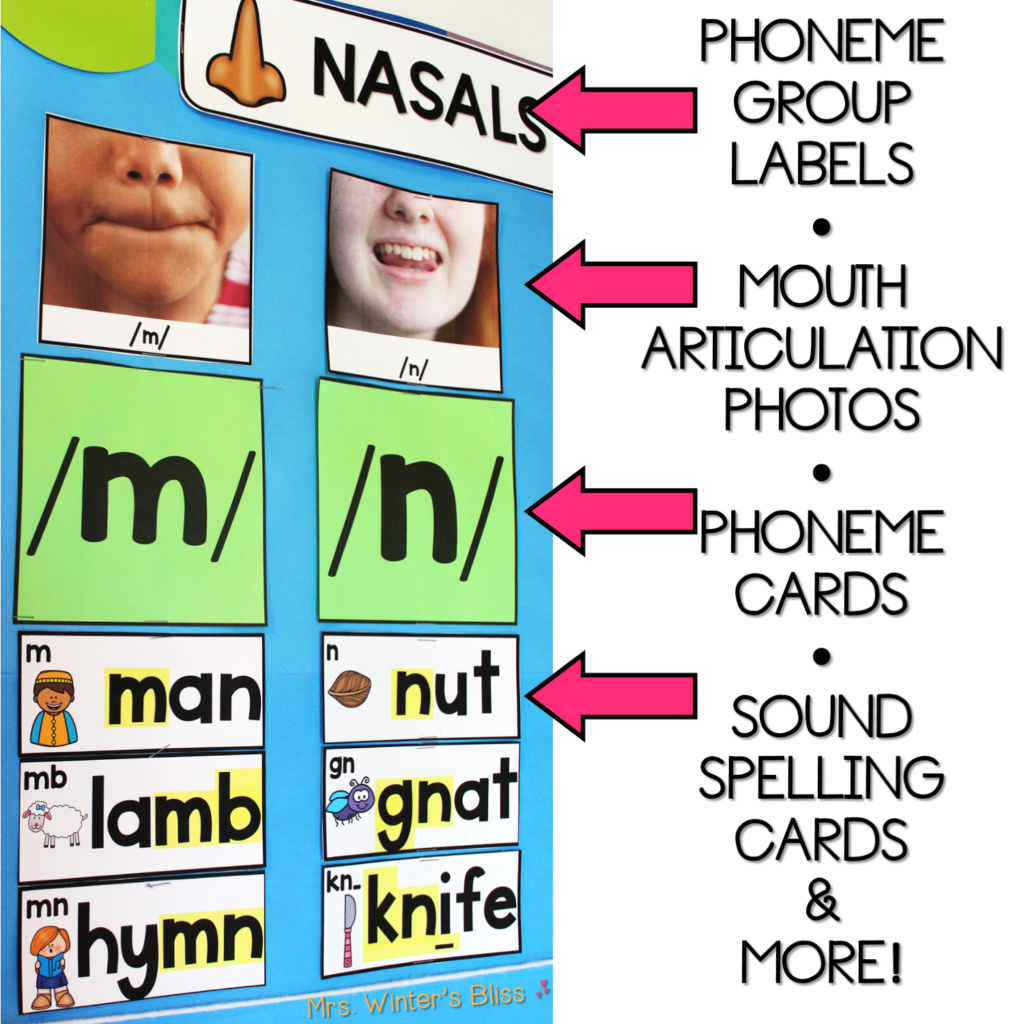
The mouth articulation photos are a wonderful support as you focus on what lips, teeth, and tongue are doing when you produce a sound.
You’ll also get sound spelling cards (both large and small) and sound spelling picture cards to post below each phoneme.
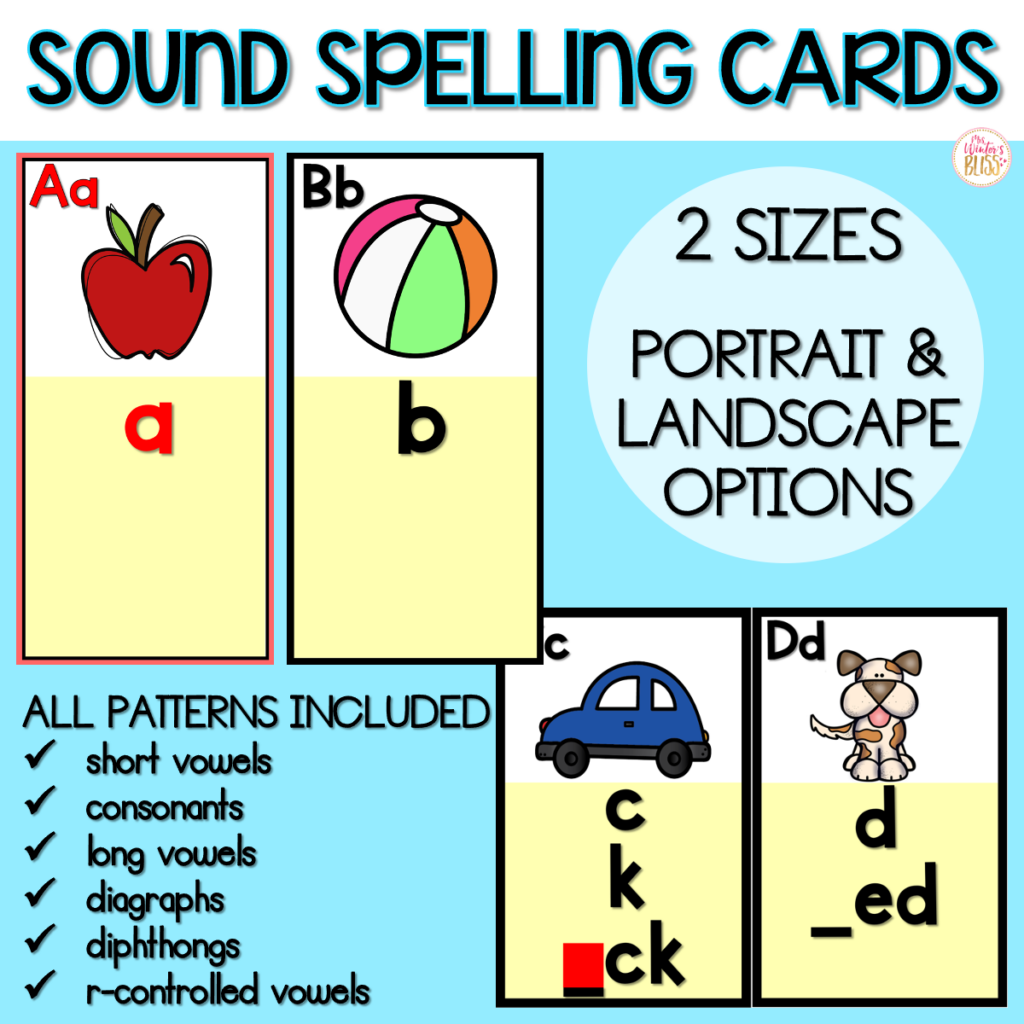
The resource also includes materials for your students! These materials allow you to differentiate and provide the support students need to be independent readers and writers!
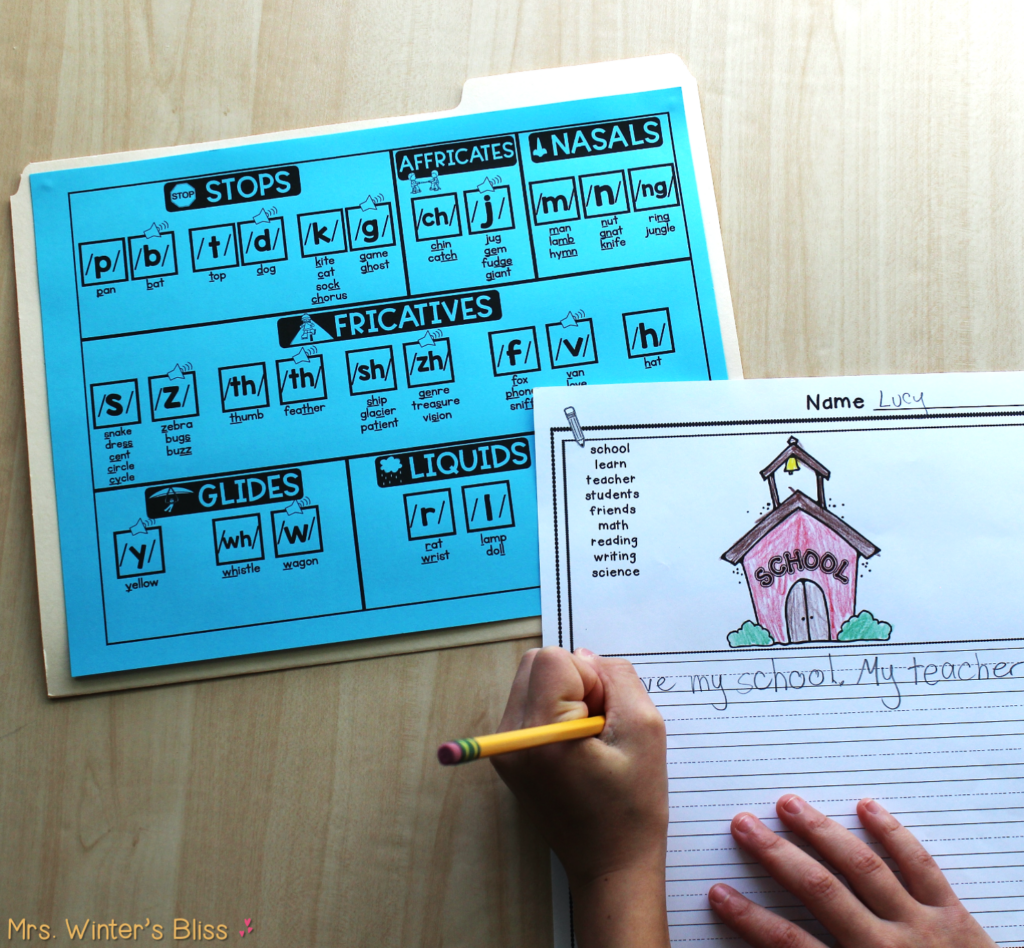
The student materials include:
- Vowel Valley Chart (2 versions)
- Consonant Chart (2 versions)
- A-Z Sound Spelling Chart for student folders
- Alphabet Chart (color and b/w)
- My ABC Dictionary
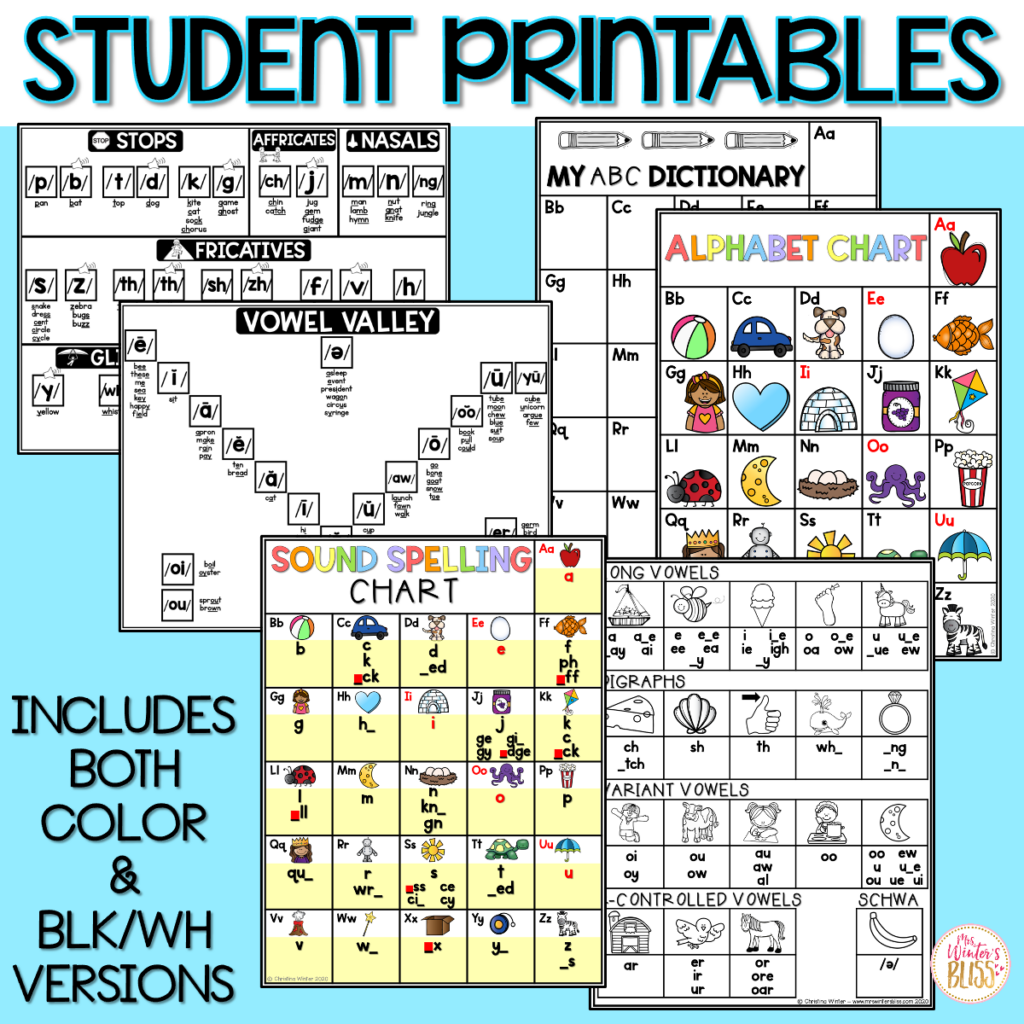
I love this resource because it has everything (and more!) you need to get a sound wall up and running in your classroom. The only thing you need to do is print the materials, cut and laminate, if you wish!
I felt that by taking my word wall off the wall and replacing it with a sound wall was giving my students a more useful tool. If you still use a traditional word wall but it feels more like a classroom decoration, or you just want to improve your phonics and writing instruction, I encourage you to give a sound wall a try. It is a tool that will transform instruction and help your students grow as readers and writers.
-shop this post-
-
Sale Product on sale
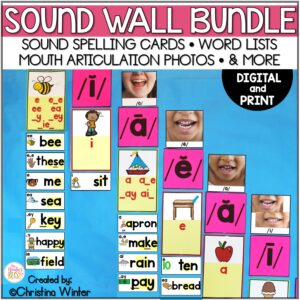 Phoneme Sound Wall with Mouth Articulation Photos – science of reading alignedEarn 0 Reward Points
Phoneme Sound Wall with Mouth Articulation Photos – science of reading alignedEarn 0 Reward Points$31.50Original price was: $31.50.$28.00Current price is: $28.00.Rated 5.00 out of 5 based on 21 customer ratings
–PIN for LATER–










